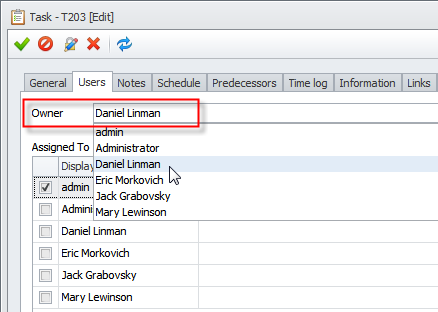 |
|
 |
VIP Task Manager |
 |
|
 |
VIP Task Manager |
|
The role of a supervisor is to be a problem-solver who supports the subordinates, considers their suggestions and ideas but does not criticize them. The supervisor is a person who is interested in assisting the employees to perform their tasks better. The supervisor provides guidance, training, support, encouragement, and advocacy for the rights of the employees. The supervisor takes control over task performance, monitors employee jobs and makes evaluations based on key performance indicators. Whether you are a supervisor of a team within a building project or a financial audit campaign, you will perform a set of common functions and duties. The role of a supervisor assumes the following major functions: |
||
1. Providing effective supervision
2. Setting performance goals The supervisor should work at development of a set of performance goals. Performance goals are to be defined to both each employee and the team. Individualized targets outline the task list per team member, as well as the due dates for the completion of this task list. Performance goals for the team can be achieved by completion of individualized performance targets. When each employee is working to meet group performance goals, the team performance goals is more likely to be achieved timely. Performance goals should be determined in consultation with the team members in form of meetings. The supervisor should motivate the staff to achieve their performance targets through their own efforts. There are several rules which the supervisor should take while setting performance goals:
3. Identifying the reason of performance problems We live in imperfect world, and that's why we cannot create a supervisory system that will be absolutely trouble-free. Conflicts and issues are inevitable. The supervisor helps to resolve the troubles that employees are encountering. But sometimes for some reasons, employees may be unwilling to report a problem to the supervisor what makes the problem veiled and unobvious. In this case, the supervisor must make an extra effort to find out whether the problem exists. Once the problem is detected and unveiled, it is expected that the supervisor defines the nature of the problem before taking any corrective steps. There is a checklist of questions the supervisor should consider:
| ||
|
Once you have identified the reasons of performance problems, the next step is to implement a program for improvements. This program is dependent on the specific projects or campaigns, so you must develop the program basing on the peculiarities of the project/campaign you are involved in.
|
||
|
CentriQS is a supervisory system for managing and controlling tasks of the employees. With CentriQS you are able to create, assign, share, supervise, track and report tasks and task lists. You can assign a supervisor to a task or a group of tasks. The system of automatic notifications in CentriQS allows to receive short reports on task progress to email box. At the Scheduler view you can plan your meetings with the staff and build daily agendas. The Scheduler view displays tasks in daily, weekly or monthly view which makes it easer to plan tasks and events. |
||
 |
|
 |
VIP Task Manager |




 Play Demo
Play Demo
 Play Demo
Play Demo